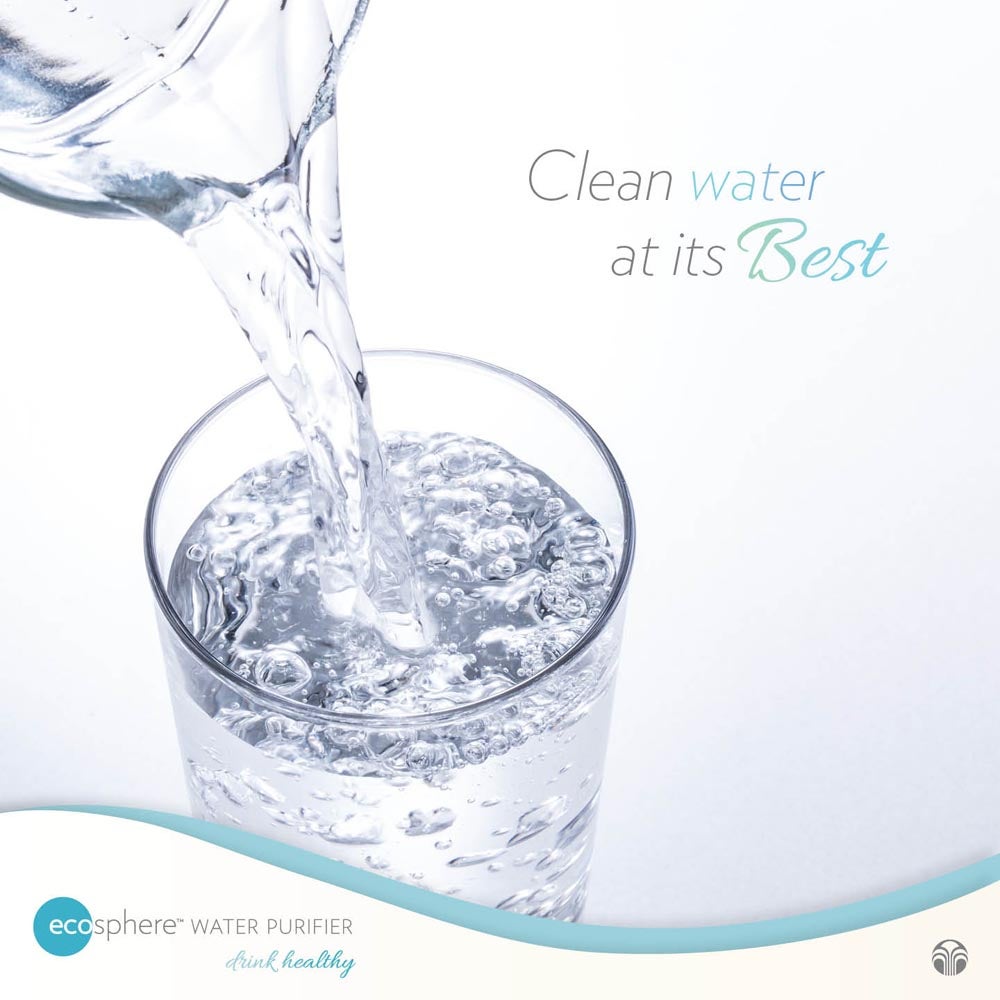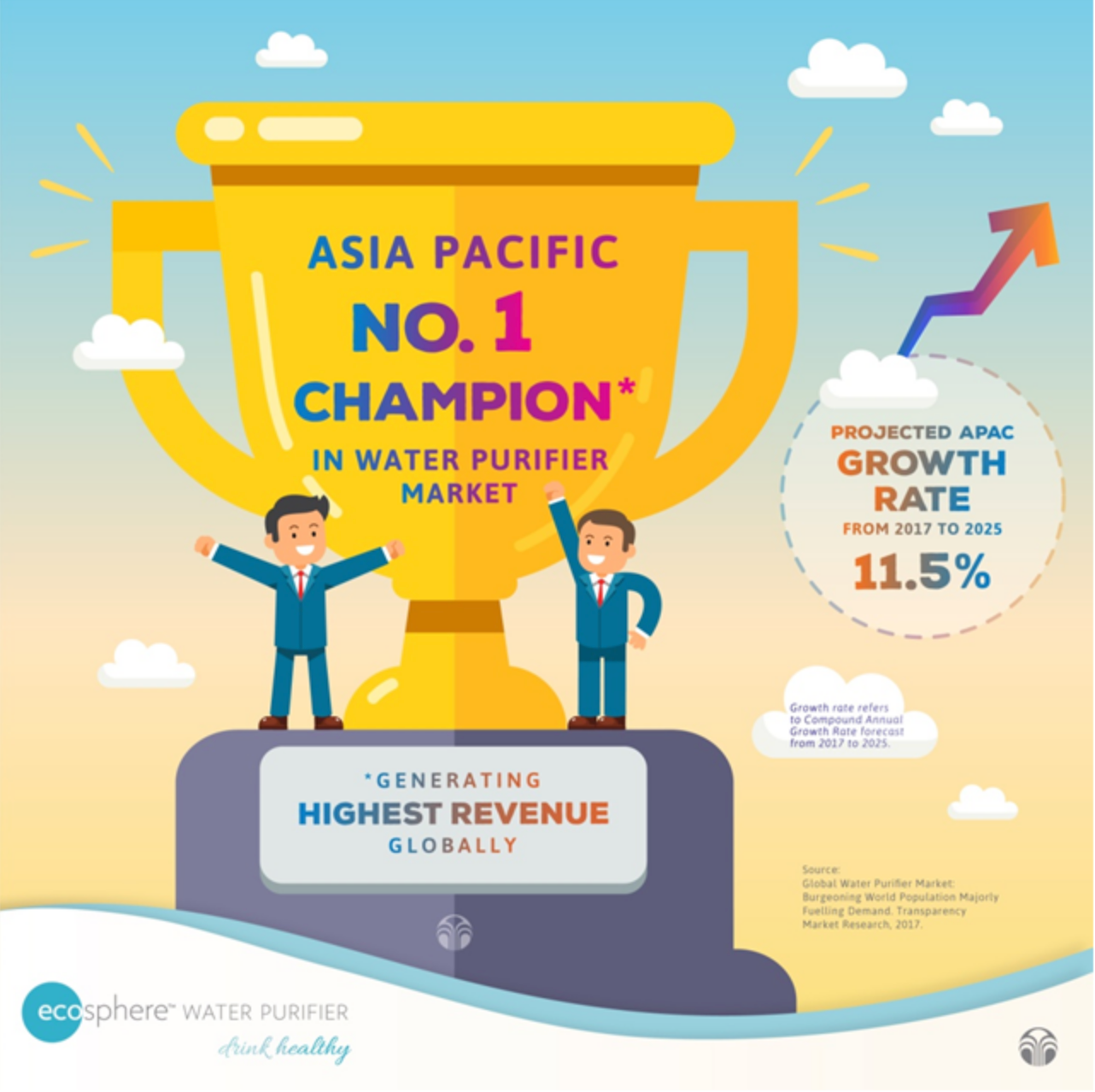Water Purifier: H20 Facts You Should Know
January 03, 2018

To understand how effective a water purifier is and be able to accurately compare one system to another, you need to know what the product claims mean. But let's be honest, unless you're a math whiz or a water engineer, the information can seem overwhelming and confusing. Ever wake up in a cold sweat after having a dream that you're back in school facing an unexpected math test about concepts you don't know? If so, then this article was written especially for you. Read on, and in a few minutes you'll feel like a water purifier expert.
Water and Your Body
We all depend on clean water to live. Approximately 60 percent of our weight is water, our organs are composed of water, and every system in our bodies is dependent upon water. Things like digestion, body temperature modulation, respiration, blood regulation, cell renewal, joint lubrication, as well as the ability to flush out toxins and excess fat rely on proper hydration. It's recommended that men consume approximately 3 liters of water a day, while women need 2.2 liters. But your lifestyle, overall health, and the climate where you live will influence what's right for you. Of course, not all your water intake comes from only drinking water; when you drink juice, eat fruit, or have soup, you're getting water. Surprisingly, even though we know the importance of staying hydrated, many of us are dehydrated without even realizing it. Feeling sleepy and run down? That's often a sign of dehydration. Two basic rules of thumb to determine if you're dehydrated are 1) you should feel thirsty, and 2) your urine should look pale yellow (unless you're taking B-complex vitamins, which can cause a bright yellow color).

The Dire Effects of Contaminated Water
Did you know that 2.1 billion people didn’t have access to clean drinking water in 2015? Tragically, it's estimated that more than 840,000 people die each year from diarrhea caused by drinking unsafe water and having poor hygiene. Water scarcity isn't limited to third-world countries either. Increased urbanization, manufacturing, pollution, natural disasters, and climate change are making water conservation a growing worldwide concern, which means all of us could someday be affected.
Water Purification—One of the Answers
When safe drinking water isn't available, the results can be catastrophic. Effective water purification methods remove harmful contaminants such as bacteria, viruses, fungi, lead, algae, toxic chemicals, pesticides, and other harmful substances to make it completely safe to drink and use. Also, purification often improves the look, smell, and taste of water. It’s important to note, however, that not all water purification systems are created equal, and some aren’t very effective in removing all of these harmful substances. Every water purification manufacturer makes strong claims, stating their products eliminate practically all harmful elements. You'll see claims that promise anywhere from a 99.99 percent reduction of microbes and other contaminants to a 99.9999 percent reduction. And while those two numbers may seem like they mean the same thing—after all, both are a smidge less than 100%, right? WRONG! In the world of water purification science, the difference between these two numbers is huge.
Understanding the Numbers—It's Not So Hard!
When learning more about water purification, you'll often see the term "log reduction." At first, this may seem confusing, especially when you're probably used to dealing with percentages, but there's a simple explanation. Scientists deal with enormously long numbers, so they use abbreviations whenever they can (aka scientific notations) to make long numbers easier to manage and to understand. A logarithmic scale or a log scale is simply the abbreviation method used by microbiologists when they describe decreases in microorganisms. The key thing to remember about a log scale is that it uses factors of 10. For example, if a bacterium has been reduced by 99.99 percent and then gets reduced even more, additional nines would have to be added (99.999 percent, 99.9999 percent, and so on), which would be needlessly cumbersome. Using a log scale is a more efficient way of working with data.
That's because a log reduction is concisely presented as a 1 log reduction, a 2 log reduction, a 3 log reduction, etc. If you're still confused, look at the chart below. You'll be instantly enlightened!
Handy Log Reduction Chart
1 log reduction means the number of germs is reduced 10 times or 90 percent
2 log reduction means the number of germs is reduced 100 times or 99 percent
3 log reduction means the number of germs is reduced 1000 times or 99.9 percent
4 log reduction means the number of germs is reduced 10,000 times or 99.99 percent
5 log reduction means the number of germs is reduced 100,000 times or 99.999 percent
6 log reduction means the number of germs is reduced 1,000,000 times or 99.9999 percent
6 Log Reduction—The Gold Standard
Remember the example in the Water Purification paragraph? A 99.99 percent reduction in microbes vs. a 99.9999 percent reduction? If you look at the chart, you'll see the former is a 4 log reduction, while the latter is a 6 log reduction. That's a difference of 100 times, which is significant when you consider the CFUs (Colony Forming Units—the number of harmful bacteria or fungi cells with the ability to multiply) that are left behind.
A 6 log reduction is considered the gold standard in water purification; it's what companies strive for but few ever achieve because of the difficulty. To reach this standard, a reduction of 1,000,000 CFUs must be decreased to 1 CFU or less. In a recent internal study, the EcoSphere Water Purifier performed even better than a 6 log reduction, reducing 6,000,000 CFUs to LESS THAN 1 CFU, whereas many purification units can only claim a 99.99 percent or a 4 log reduction. Furthermore, some purification units can only deliver a 99.9 percent or 3 log reduction of CFUs, meaning water from these units will have 1,000 times the amount of microorganisms compared to the EcoSphere Water Purifier's output water.
Additional Terms to Know
When it comes to water purification and microbial log reduction, you'll see the use of the following words: sanitation, disinfection, and sterilization. Although it seems as if they mean the same thing, they have distinctly different definitions.
Sanitation offers the least effective reduction of contamination, with 99.9 percent or a 3 log reduction. So out of 1,000,000 microorganisms, 990,000 will be destroyed, leaving behind many microorganisms that are ready to reproduce.
Disinfection is a step up in microbe/contaminant reduction with a range of 99.99 percent up to 99.999 percent or a 5 log reduction. Out of one million, it's possible that up to 999,990 microorganisms will be destroyed, but some viable, ready-to-multiply microbes will be left behind.
Sterilization occurs when all microorganisms and their spores are destroyed, which is a 6 log or 99.9999 percent reduction. Statistically, zero viable organisms survive. The Ecosphere Water Purifier is at this level of efficiency.

Summing It All Up
If you've read this far, you hopefully have a better understanding of water purification claims, which should make choosing the best system for you and your family a bit easier. Here’s to you! Start drinking healthy by tapping into the power of EcoSphere Water Purifier!
Tap into the power of EcoSphere Water Purifier now. Drink healthy!
Philippines | Singapore | Malaysia | Indonesia | Vietnam | Other countries
Sources:
water.usgs.gov
blog.eoscu.com
mayoclinic.org
epa.gov
theworldcounts.com
ciriscience.org
michrochemlab.com
